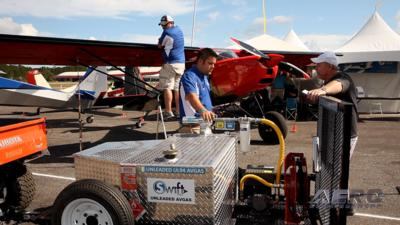Letter to Administrator Calls For Agency Action in Interest of Safety
The recent move by California's Santa Clara County Board of Directors to ban 100LL fuel from sale within their purview has been met with consternation from aviation industry groups, who say the move is a matter of vital safety for aviation operations in the region.

The long-running feud between the County and the two local airports has made headlines time and again for the often underhanded methods employed in an effort to reclaim the increasingly valuable real estate occupied.
Reid-Hillview and San Martin occupy some of the only land conceivably readily developed remaining in San José, a tantalizing target of opportunity in a region with home prices nearing an average of $2 million. airport and The most recent development saw the board making an end run around FAA mandates that require continued airport operation through 2030 by the discontinuation of 100 low lead aviation fuel. The change was made under the auspices of child safety, with the county notifying local fuel sellers that a suitable analogue exists in the Swift Fuels UL94, currently offered by 2 of the 4 points of sale in the county. Its suitability is limited, however, by the need for owners to purchase an approved STC, assuming one is available for their aircraft.
The General Aviation Manufacturers Association has taken great issue with the change, writing to FAA Administrator Stephen Dickson about the issue. While it may seem odd for the entire aviation industry to take umbrage with the local politics of an upscale California town, Santa Clara has become a standard bearer over time for both sides. Aviators see the common fight of small airports all over the country, where suburban sprawl has grown to surround longstanding airports built decades prior only for the new neighbors to attempt to complain, shut down, and claim the lands to their own ends.

Those "not in MY backyard" busybodies all over the country have seen the moves made in Santa Clara as a prototype, a manual in effective ways to end aeronautical operations in their areas. Whether it's fuel bans, lead exposure complaints, safety of flight issues, or never-ending hall-monitoring, it has all been demonstrated at Reid-Hillview.
GAMA calls upon the FAA to use its “aviation safety mandate to prohibit individual airports from interrupting the availability of 100LL and stifling the cooperative industry-government effort to safely transition the entire general aviation fleet to unleaded fuels. It is vital to public safety to mitigate misfuelling risks for pilots and passengers, and for the people and property on the ground during this transition.” Reminding the agency that many aircraft may be visually similar but consume different fuels, or some model ranges which cannot use alternate fuels entirely. Piston aircraft reliant upon high-compression engines consume 75% of the 100LL sold in the United States, with the majority not approved in any form to change to an unleaded fuel on offer in the still fairly limited marketplace.

The move to have two of the few airports in the area offer nothing but a legally unusable fuel (to the majority of transient aircraft who will lack the necessary STC approval) is untenable to the organization.
“We are committed to working with the FAA and industry stakeholders to effect a smart, managed nationwide transition to unleaded fuels in general aviation aircraft, one with safety at its core," said the group in its letter. "Unlike automobiles, if an aircraft has engine trouble, it cannot simply pull over to the side of the road. The automobile industry took time to safely transition to unleaded fuels and was successful, and the aviation industry must do the same.”
 ANN's Daily Aero-Term (05.01.24): Say Altitude
ANN's Daily Aero-Term (05.01.24): Say Altitude ANN's Daily Aero-Linx (05.01.24)
ANN's Daily Aero-Linx (05.01.24) Classic Aero-TV: Korean War Hero Twice Reborn
Classic Aero-TV: Korean War Hero Twice Reborn Airborne 04.29.24: EAA B-25 Rides, Textron 2024, G700 Deliveries
Airborne 04.29.24: EAA B-25 Rides, Textron 2024, G700 Deliveries Airborne Affordable Flyers 05.02.24: Bobby Bailey, SPRG Report Cards, Skydive!
Airborne Affordable Flyers 05.02.24: Bobby Bailey, SPRG Report Cards, Skydive!





